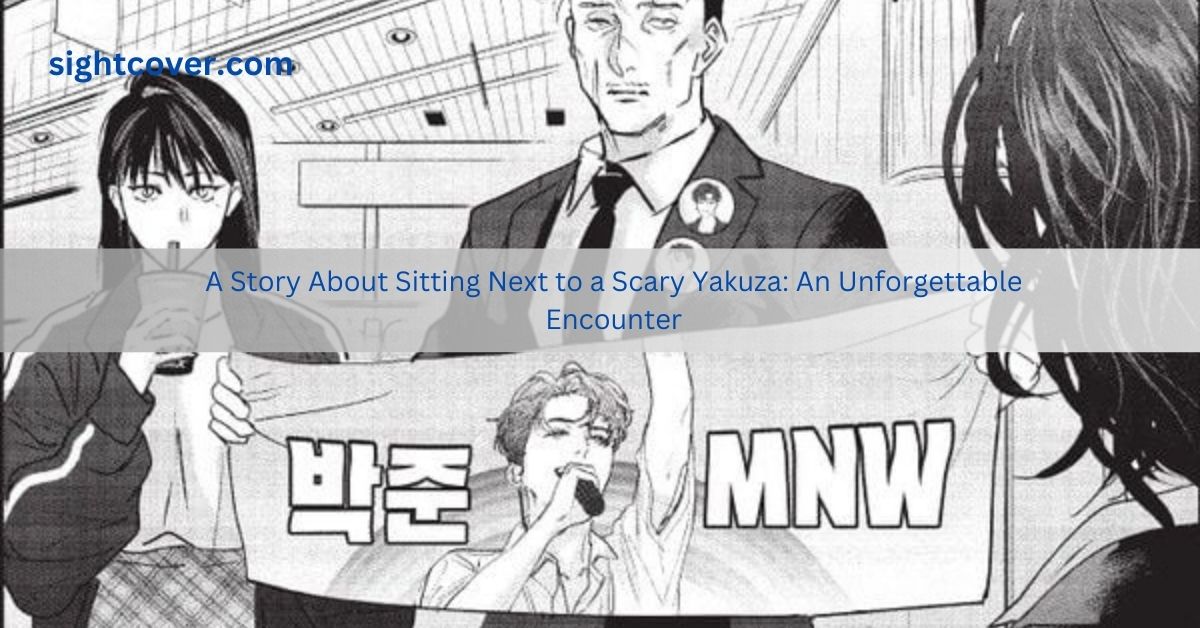Imagine embarking on a seemingly ordinary train journey only to find yourself seated next to someone who exudes an air of menace and intrigue. This is precisely what happened in an unforgettable experience involving a member of the notorious Yakuza, Japan’s infamous mafia organisation.
This article delves into the gripping story of sitting next to a scary Yakuza, exploring the tension, fear, and unexpected twists that unfolded during this nerve-wracking encounter.
The Journey Begins – Let’s Start!
It was a bright, sunny afternoon in Tokyo when the adventure began. I had boarded a train bound for Osaka, expecting a routine trip through Japan’s picturesque landscapes. The train was packed with commuters, tourists, and businesspeople, all absorbed in their activities. I was relieved to find an empty seat next to me and quickly settled in, preparing for a peaceful journey with my headphones on.
1. The Unexpected Intrusion:
Just as the train began to move, the tranquillity of the ride was disrupted. A man in a sharp black suit and white shirt sat beside mine. His presence was immediately commanding and seemed to exude an unsettling aura. As the train clattered along the tracks, I couldn’t shake the feeling that something was amiss.
Meeting the Mysterious Stranger – Hold On!
1. The Imposing Appearance:
The man’s appearance was striking. His attire was impeccable, but the details truly caught my attention. He wore dark sunglasses that obscured his eyes, adding an element of mystery. His sharp suit was well-tailored, but the tattoos peeking out from under his shirt cuffs alarmed me. The intricate designs were unmistakable signs of Yakuza affiliation, known for their elaborate and symbolic tattoos.
2. Body Language and Demeanor:
The man’s body language was equally intimidating. He sat with a relaxed but commanding posture, his presence alone creating an atmosphere of tension. He did not engage in conversation, choosing to remain silent and aloof, which only heightened the sense of unease.
Unraveling the Yakuza Connection – What It Is!
1. Understanding the Yakuza:
The Yakuza is Japan’s organised crime syndicate, known for its strict codes of conduct and criminal activities. Members are often identifiable by their tattoos, which are decorative and carry deep cultural and personal significance. Seeing these tattoos on the man next to me immediately triggered my apprehension, as they were strong indicators of Yakuza affiliation.
2. The Role of Tattoos:
In Yakuza culture, tattoos are a symbol of status and commitment. They often feature elaborate designs representing various aspects of the member’s life, beliefs, and hierarchy within the organisation. The tattoos visible on my seatmate’s wrists suggested a high rank, further intensifying my fear.
The Unfolding Drama – Creating the Scene!
1. Heightened Tension:
As the journey continued, the tension between us was palpable. I could feel the weight of the man’s presence, making it difficult to focus on anything other than my anxiety. Every subtle movement and slight sound seemed amplified, and my mind raced with possibilities of what could happen next.
2. Encounters with Fellow Passengers:
The man’s presence seemed to affect other passengers as well. I noticed a few furtive glances in his direction, and some people shifted uncomfortably in their seats. It was clear that his presence was having a noticeable impact on the atmosphere within the train.
Cultural Insights into the Yakuza – What These Are Thiught Traditionally!
1. The Yakuza’s Influence in Japan:
The Yakuza have a significant and complex presence in Japan. Although they are involved in various criminal activities, they also play a role in Japanese society, sometimes even engaging in activities that are perceived as philanthropic. Their influence extends into many aspects of life in Japan, and their reputation often precedes them.
2. Public Perception:
Public perception of the Yakuza is mixed. While they are known for their criminal activities, they are also seen as a part of Japan’s underworld culture. Their presence can evoke various reactions, from fear and respect to curiosity and fascination.
Handling Fear and Uncertainty – Have A Grip On Yourself!
1. Coping Mechanisms:
Sitting next to someone you believe to be a member of the Yakuza can be nerve-wracking. It is essential to remain calm and avoid drawing attention to yourself. Focusing on breathing exercises and maintaining a low profile can help manage anxiety in such situations.
2. Seeking Help:
If you feel unsafe in a situation, it is advisable to seek assistance from authorities or trained staff. They are trained to handle various situations and can provide support if needed.
The Unexpected Twist – What Happened Then!
1. The Revelation:
Just as the journey reached its peak of tension, an unexpected twist occurred. The man, previously silent and aloof, suddenly engaged in a friendly conversation with a fellow passenger. He was not a Yakuza member but a businessman on his way to a meeting. His tattoos were related to a personal interest in traditional Japanese art.
The Relief:
The revelation was a profound relief. The man’s demeanor and appearance had created an atmosphere of fear, but his true identity was far less intimidating. The encounter, while initially frightening, turned out to be a reminder of the importance of not jumping to conclusions based on appearances alone.
Lessons Learned from the Encounter – Have A Lok On!
1. The Importance of Context:
This experience highlighted the significance of context in interpreting people’s behavior and appearance. The initial fear was based on assumptions that were not grounded in fact. Understanding the broader context can prevent misunderstandings and reduce unnecessary anxiety.
2. Managing Perceptions:
The encounter taught me the value of managing perceptions and remaining open-minded. Preconceived notions can lead to unnecessary fear, and it is essential to approach situations with a balanced perspective.
Similar Experiences – A Broader Perspective!
1. Stories of Misunderstandings:
Many people have encountered situations where their assumptions about others were proven wrong. Stories of mistaken identities and misunderstandings are common and serve as reminders of the importance of open-mindedness.
2. Navigating Cultural Differences:
Encounters with individuals from different cultural backgrounds can sometimes lead to misunderstandings. It is important to approach such situations with sensitivity and awareness of cultural differences to avoid misinterpretations.
FAQ’s:
1. What should I do if I encounter someone who seems intimidating?
If you encounter someone who seems intimidating, it is important to stay calm and avoid drawing attention to yourself. If you feel unsafe, seek assistance from authorities or staff.
2. Are Yakuza members easily identifiable by their tattoos?
Yakuza members often have tattoos that are associated with their organization, but not all tattoos are indicative of Yakuza affiliation. Tattoos can be related to various aspects of Japanese culture and personal interests.
3. How can I manage anxiety in potentially scary situations?
To manage anxiety, focus on deep breathing and try to maintain a low profile. It can also be helpful to engage in calming activities or seek support from others if needed.
4. What are common misconceptions about the Yakuza?
Common misconceptions include assuming that all Yakuza members are violent criminals. While the Yakuza is involved in criminal activities, they also have a complex role in Japanese society and culture.
5. Can misunderstandings about people based on their appearance be harmful?
Yes, misunderstandings based on appearance can lead to unnecessary fear and prejudice. It is important to approach individuals with an open mind and avoid making assumptions without sufficient context.
Conclusion:
A story about sitting next to a scary Yakuza unfolds as an intriguing and educational experience. The initial fear and tension give way to a valuable lesson in understanding and perspective. While the encounter was initially unsettling, it ultimately reinforced the importance of not letting appearances dictate our perceptions of others.


